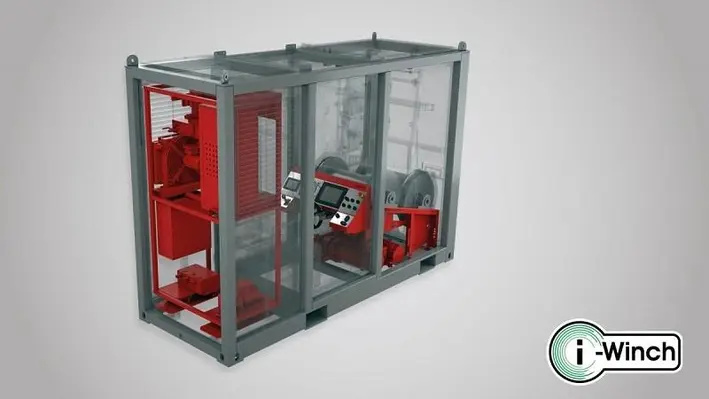

Paradigm, an upstream oil and gas technology and services company, has launched the i-Winch, a sustainable conversion service for adapting existing diesel hydraulic intervention winches to fully electric driven intelligent winches.
The i-Winch was developed from their fully electric driven and controlled E-Winch range, to address the challenges facing service companies to invest in new assets that offer lower carbon solutions.
“With the current pressures on oil and gas companies to reduce carbon emissions, the benefits of electric driven winch systems are clear. As with the uptake of electric cars with environmentally conscious consumers, so too are operators looking to satisfy their need to responsibly reduce emissions,” commented William Ash, Managing Director of Paradigm Technology Services, a division of Paradigm Group.
“We developed the i-Winch unit based on a philosophy of repurposing existing diesel hydraulic winches into fully electric drive units, using our proprietary drive system which eliminates the need for hydraulics in either diesel or electric hydraulic driven winches.”
Capturing value
Ash continued, “One of the major challenges for service companies currently is the investment costs involved in switching to electric driven units whilst they already have a fleet of conventional diesel hydraulic units on the books. For example, one of the most prolific winches on the market over the years is the ASEP SlimLine, a diesel hydraulic designed unit designed to last several decades. An i-Winch conversion to rebuild an old unit back to fully electric driven, will extend the life of the unit by at least 10 years, so not only extending the life of the unit but eradicating the need to repair or replace equipment.”
“In addition, the performance of the unit is improved and offers all the benefits of our E-Winch range with constant speed or tension control, remote control, automated jarring, zero-line breakage, and enhanced safety whilst being fully configured for remote operations, thus reducing the number of crew. We conservatively estimate US$15,000 annual maintenance saving per unit after the conversion whilst sustainably repurposing a significant portion of the material from the donor unit as part of the process”.
Ash concluded, “Operators are under pressure to significantly lower their carbon emissions right now, and we are proud that our values and global leading technology combine to offer a cost-effective solution here. The combination of our E-Winch or i-Winch units with our digitally enabled slickline platform system, Slick-E-Line, can transform conventional well intervention operations into a fully digitally enabled well intervention single package, that reduces runs, reduces costs and reduces carbon impact whilst enhancing real time control.”
For a relatively young company (Paradigm Group was established in 2009) the i-Winch unit is the latest in a strong line of solutions developed to minimise carbon impact and generate value for the energy industry.


As part of the Offshore Well Intervention Virtual Offshore Well Intervention Europe Conference 2021, Charles Sanders, Business Development Manager at 3M, explained how 3M’s Ceramic Sand Screen Systems can provide operators and service companies with a competitive advantage and better risk/reward profile for well intervention operations.
Sanders opened the session by describing the basic design of the ceramic sand screens. The equipment is made up of a perforated base pipe with ceramic rings placed over on top. These rings have ridges that create a profile and provide the sand control. The solution comes in modules of 1.5m length and is available in a range of different sizes.
Alongside a host of benefits, the ceramic sand screens have been designed to reduce and potentially nullify three main areas of risk: erosion, economic and reputational.
Explaining these, Sanders noted that because the through-tubing of the sand control solution has been designed with reduced tubing size there is a perception that it is therefore higher risk as it amplifies the erosional forces at previous economic flow rates. But this is only the case with standard screens using inferior material which are severely limited by their susceptibility to erosion. With such equipment, when dealing with erosive material, the operational velocity must be kept fairly low otherwise the well life can be greatly shortened.
By replacing the traditional materials with ceramic, which is highly resistant to erosion and corrosion, the root cause of these problems are addressed which completely changes the traditional rule of thumb to indicate whether a screen can be run.
Sanders commented, “The material change in our sand screens means we can push the intermediate boundary so that conditionals viewed as high risk with traditional materials are now low risk. We have deployed into harsh environments far and excess of what the rule of thumbs are. This will enable us and operators to be more competitive and change the risk/reward landscape.”
A well that is producing to its full potential, unhindered by solids production, is a future revenue stream for both operator and service company. In this way the ceramic sand screen reduces the erosion risk, as explained; reduces the economic risk, by offering enhanced produce rates as well as limiting the cost of failure; and reduces reputation risk both on a corporate and personal basis, as 3M’s proven track record with this technology means you can be confident when deploying it.
Ceramic Sand Screen case studies
To demonstrate the capabilities of the ceramic sand screens, Sanders guided the audience through three case studies where the technology has been deployed.
The first was covering an underperforming gas well in the North Sea where it was not feasible to do a frac pack. There were no sand management facilities on the platform and the estimated velocity in perforations was 100 ft/s. 3M deployed their ceramics sand screens for the frac operation at 3 screen joints using rigless on E-line single run through the riser. This resulted in no proppant flow back for all six sub sea and two platform well applications, high rates of 35 MMSCFD, and increased longevity of the well life with all still producing today with no sand control failure.
After this success, 3M wanted to deploy their technology to enter into different zones and were commissioned to provide a cost effective solution to maximise production from a well in a shallower zone with downhole sand control in Egypt. This well had high gas rates, high influx velocity and impingement velocity through short net target zone. Hot spotting was also a major concern. Ceramic sand screens were chosen to address these challenges, and via a rigless wireline deployment, they were placed across the perforation zone in two wells and two wells above the perforation zone inside the tubing. This added 15 MMSCFD of gas to the asset, achieved sand free production rates and the company subsequently reviewed the technology to replicate it as the primary sand control method in other applications. As a result of these benefits the operator was able to capture more than US$12mn in first year of average production.
Finally, Sanders described an example in Norway where the ceramic screen was used for OH SAS completions in high corrosive and high rate gas wells. The solution in this case was specifically designed to address client specific OH challenges. Once deployed the sand screens eliminated the technical challenges and risks of gravel packing HPHT conditions, reduced the operation risk and avoided the cost of pumping services. Subsequently, the well was able to achieve its target rate of 106 MMSCFD.
Sanders added that the velocity encountered on these wells (such as 100 ft/s at the North sea operation) was huge and something that could not even be considered by traditional sand screen methods and yet 3M’s solution coped effectively and has even been tested in environments of up to 200ft/s. This represents a significant step change.
Sanders stated, “When you remove the risk perception the high risk opportunities open up. I have focused on erosional environments and benefits here but there is a whole range of advantages that this solution offer such as reduced operational complexity and HSE risks, proven productivity and minimised solids production, rationalising and standardising effective control design in the field, and can save you up to four to six times of CAPEX requirements over a conventional rig operation.”
Concluding the session, Sanders offered the audience the opportunity to challenge 3M with their well sand problems which they would be happy to look into and address if they can. As Sanders added, “these don’t solve every problem, but they sure do solve a lot of them and we would love to see how we can help deliver better performance for your assets or well intervention services.”
Another opportunity to learn more
On Tuesday, July 6th 2021, 3M will be demonstrating in more detail how the Ceramic Sand Screen Systems can offer effective sand control and long term productivity for your wells in a free online webinar.
Starting at 10:00 am BST, 3M will discuss whether the current sand control practices used in oil and gas production contribute enough to meet productivity targets and energy policies, and explain how 3M’s ceramic sand screens can eliminate the need for complex sand control methods. This will be followed by a Q&A session where you can ask your questions anonymously. If you register and can't make it to the webinar, a recording is available after the event.
To sign up, follow the link below:
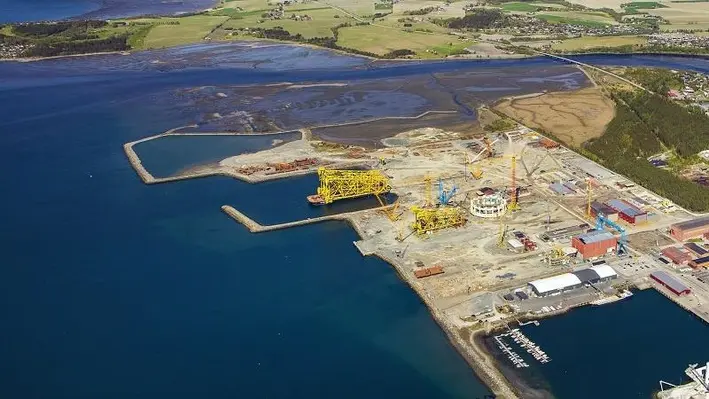
 Aker Solutions has delivered another steel substructure for the largest industry project ever in Norway, the Johan Sverdrup field.
Aker Solutions has delivered another steel substructure for the largest industry project ever in Norway, the Johan Sverdrup field.
For phase 1 of the project the company previously provided three platform jackets and, with this jacket for phase 2, four out of a total of five have now been built and delivered on time and budget from Aker Solutions’ yard in Verdal, Norway.
Through the frame agreement entered into in 2014, and in international competition, Aker Solutions was awarded three out of four jackets for the first phase of the project. The first delivery was the riser platform jacket in the summer of 2017 which was the largest and most complex platform jacket delivered from Aker Solutions to date. It was delivered alongside the first visible installation at the new Johan Sverdrup field centre. In March 2018, Aker Solutions delivered the steel substructure for the drilling platform, and in July of that year the process platform substructure was delivered.
Now Aker Solutions has announced that the process platform substructure for phase 2 is en route from Verdal.
Sturla Magnus, Executive Vice President and Head of Aker Solutions' topside and facilities business, said, "This is an exciting and important day for us. Through great cooperation with Equinor, we have delivered all four of these platform jackets at the agreed quality, time and budget. I am very pleased that our customers confirm that we are a supplier that offers an attractive combination of technical expertise and cost-effectiveness.”
In total, the deliveries from Aker Solutions in Verdal make up about 90% of the total weight of the substructures for the combined phase 1 and 2 of the Johan Sverdrup field. More than 100,000 metric tons of steel will be delivered from Aker Solutions' facility in Verdal, including the piles that attach the jackets to the seabed. In addition, Aker Solutions’ facility at Stord has delivered a topside as well as a large module for the Johan Sverdrup field.
Erik Stiklestad, Aker Solutions’ Yard Director at Verdal, commented, “We have extensive experience in providing the customers with complete and seamless deliveries. In recent years, we have also increased industrialisation for how we execute projects. This, combined with long-term relationships in the supplier market, makes it possible for us to offer flexibility to our customers. We are now delivering as planned despite a year of major challenges with Covid-19. Together with our employees and partners, we have found good solutions that enable us to deliver the jacket to our customer Equinor without serious injuries during the execution.”
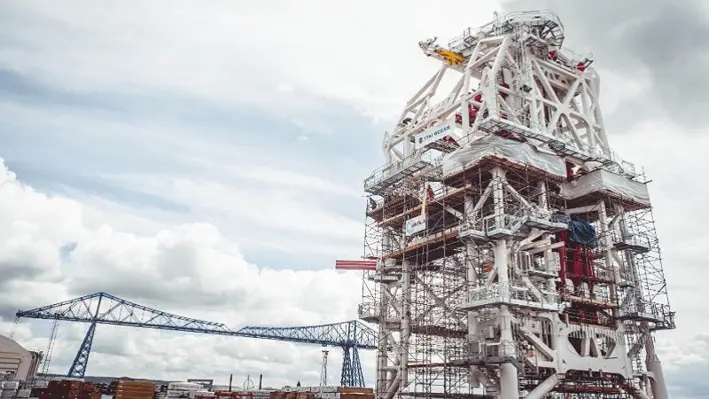

Offshore technology supplier Osbit Ltd has reached a key milestone in the assembly of a new well intervention tower system for FTAI Ocean.
The FTAI Ocean Smart Tower System now stands at 40 metres (its full height), after the top section of the tower on to the lower section was installed in a complex lift operation.
This involved hoisting the top section of the tower by crane and holding it in place on the lower section, while the sections were welded together. With the two sections joined together, the final fitout of hydraulic, control and electrical parts can now take place.
The FTAI Ocean Smart Tower System
The system, currently under construction at Wilton Engineering Services in the UK, will facilitate integrated riserless and riser-based well intervention operations on FTAI Ocean’s flagship DP3 vessel M/V Pride. When completed, it will weigh 1,300 tonnes and be capable of operating in water depths up to 1,500 metres.
It integrates a series of innovations derived from Osbit’s experience in developing well intervention and offshore handling equipment to improve operational safety, flexibility, and accessibility:
-The tower’s vertical Open Water Intervention Riser System (OWIRS) racking system improves deck safety by reducing the need for access around the well centre to handle OWIRS joints, while its small footprint optimises deck space, for more effective equipment storage.
-The system integrates the existing vessel crane into the full deployment system, providing up to a 250-tonne active heave compensated capacity. Additionally, the system offers an active and passive heave compensated platform for building, operation, and recovery of OWIRS, and riser based or riserless intervention systems in 1,500 metres and 3,000 metres respectively. The heave compensated platform is able to support coil tubing, slickline and e-line operations and provides safe and efficient personnel access via an integrated walk to work system.
-The system is fitted with both guide wire and pod wire systems which, alongside the deck skidding system, minimises the need for crane lifts, increases operating windows and enables equipment to be directly loaded into the well centre.
-Also incorporated is Osbit’s Integrated Logistics Support (Osbit ILS) software technology, which offers detailed data insight and asset performance analysis.
Steve Bedford, Director at Osbit, commented, “This system is the culmination of our extensive expertise and strong reputation in the design and build of cutting-edge well intervention and offshore handling systems. We remain committed to utilising our capabilities to support our clients in enabling safer and more efficient offshore operations.”
“As a business, it is rewarding for us to see this world-class piece of kit successfully coming together and we are very much looking forward to delivering the completed system to FTAI Ocean.”
Jon Attenburrow, Managing Director at FTAI Ocean, added, "This is a great achievement, for all involved in the design, build and assembly of the Smart Tower System, in these difficult times. We are pleased the build has been carried out safely and professionally to date, and look forward to the successful completion of the world class Well Intervention Tower.”
To hear more from Osbit and industry experts on the latest technology and best practice relating to well intervention, be sure to attend the Offshore Well Intervention Europe Virtual Conference 2021 which is accessible via this link: https://www.offsnet.com/owi-eu/register.


Well Expertise, a well management company providing well planning and operational support, has successfully used a mobile simulator for plug and abandonment (P&A) well control training to decommission several wells in the North Sea.
Well Expertise is the well management company for operator DNO during planning and execution of the permanent plugging and abandonment (P&A) of three subsea template wells at Oselvar.
Well Expertise worked closely with Drilling Systems and training specialist Survivex to develop high level well specific scenarios to simulate bull heading, reverse circulation, trapped gas and cutting casing operations. Six crews were then given various scenarios to test choke control and response to pressure increases.
This is the first time an on-the-rig (OTR) simulator has been used in-situ for P&A well-specific training to help prepare crews in advance of potential well control situations in the operation.
Following this and previous onboard simulator training success, Well Expertise will now be rolling out well specific onboard simulator training across its remaining drilling campaigns later this year with DNO, Wellesley and other operators.
Morten Laget, Business Development Manager at Well Expertise, commented, “We have an exceptional record of risk management and safety is our top priority. We strive to offer our clients any solution available that helps to reduce the risk of the operation and onboard simulator training is an excellent tool to help with this.”
“Killing the well is a key part of any decommissioning project and presents its own unique challenges. Plug and abandonment training is typically not addressed to this extent during periodic mandatory well control courses, but the OTR equipment allowed us to undergo some practical training on the rig itself during work time combined with review of subsea equipment and associated operations. This helped the crew in building competency and confidence and lowering the risk of major well control incidents,” Laget added.
Clive Battisby, Head of Simulation at 3t Energy Group, said, “The strength of the 3t Energy Group lies in our holistic offer, which combines cutting-edge technology with the very best of traditional training. For Well Expertise we combined tailored simulator training in-situ with experienced instruction to deliver a blended learning solution to meet the client’s needs.”
“To our knowledge this is the first-time blended learning with the OTR has been delivered for a P&A campaign and we are delighted it has worked so well. We are looking forward to working with Well Expertise again later this year on its forthcoming drilling campaigns.”
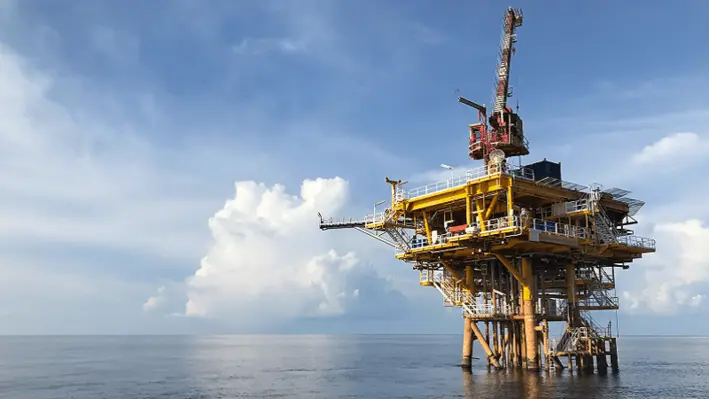

Archer Oiltools has been awarded a plug and abandonment (P&A) campaign by Wintershall Noordzee B.V across 2021 and 2022. The scope awarded to Archer is to perforate, wash, and provide cement and formation integrity testing tools, services, downhole tools on tubing conveyed, and plugs-cutters for 22 wells with an option of another 20 wells.
Hugo Idsøe, Vice President of Archer Oiltools, commented, “Over the last decade Archer has delivered a high number of P&A and Slot recovery operations to our customers in the North Sea with great success. This contract is a milestone for the southern part of the North Sea and a testimonial of all the good work that we have done for Wintershall Noordzee B.V. over the last three years.”
“Our team have delivered excellent performance and we continue to prove that Archer’s Oiltools is an industry leader for smart and robust solutions in markets where well integrity, reliability and time savings are of upmost importance.”
“With a broad portfolio of products and services within P&A and Slot Recovery, Archer is in a unique position to deliver lower carbon solutions to our clients. Through our development of new technologies and solutions, we are rapidly adapting to and embracing the sustainability focus on lower emissions,” Idsøe added.
Archer has been carving a formidable presence for itself in the North Sea in recent months with this announcement coming soon after its acquisition of DeepWell, a leading Norwegian well intervention company focused on high-tech based wireline service. DeepWell commands one of the most modern wireline unit fleets on the Northern Continental Shelf and holds a strategic long-term contract in the light well intervention market, making a fine addition to Archer’s portfolio. It is therefore no surprise that the company was awarded another contract by Wintershall Noordzee B.V. and it is highly likely more work will be coming its way in the future.


Serica Energy plc, a British independent upstream oil and gas company with operations centred on the UK North Sea and gas accounting for over 80% of its production, has encountered difficulties in the drilling of the Columbus development well, located in the North Sea, 35km north-east of the Shearwater production facilities.
The Columbus development well was spudded in mid-March and drilled, as planned, to a total measured depth of 17,600ft by the Maersk Resilient heavy duty jack up rig. A 5,900ft horizontal section was drilled through the reservoir formations of the upper forties and encountered a sequence of sands and shales, in line with pre-drill expectations. The well required sand screens to be installed to prevent fine particles being produced and difficulties were encountered while running the screens so that it was ultimately not possible to install them.
As a result, the reservoir section of the well will be side-tracked and re-drilled, using data collected during initial drilling to optimise its trajectory and avoid the difficulties encountered running the screens in the original well. The additional operations are expected to take around 3-4 weeks at a net cost to Serica of around UK£3mn.
While this has raised the expense of the operation, these recent developments are not expected to affect the timing of production start-up, which is still projected during Q4 2021. Serica stated that further updates will be provided on each project when flow test data is available.
Mitch Flegg, Chief Executive of Serica Energy, commented, “Whilst frustrating, the additional operations on Columbus are not expected to affect the timing of first production, and the economic returns of the project remain very attractive for the company.”
A recent Competent Person’s Report estimates the Columbus gross undeveloped 2P reserves to be in excess of 14 million boe and, once production begins, the average gross production forecast is projected to be around 7,000 boe per day, of which over 70% is gas.
Rhum 3 update
Serica also provided an update on the R3 Intervention Project, situated on the Rhum field, which commenced in October. The company stated that the R3 well has now been cleared of all equipment installed when it was originally completed in 2005. Reservoir access has been regained, thus allowing new completion equipment to be run in preparation for production.
The new completion is currently being installed prior to performing a flow test on the well, which is expected to be carried out in June. A diving support vessel has been contracted to install the subsea control equipment required so the well can start producing in Q3 2021.
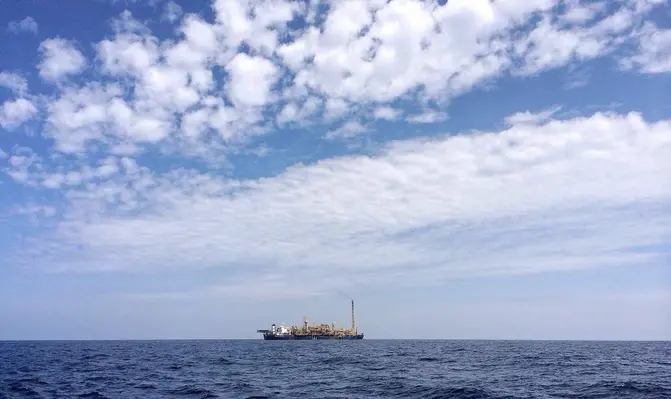

Following an offer letter signed in April 2021, Archer has announced that it has signed a sales and purchase agreement (SPA) to acquire DeepWell for NOK177mn on a debt and cash free basis which will be financed using existing cash and liquidity reserves.
DeepWell is a leading Norwegian well intervention company which provides wireline and downhole services to oil companies on the Norwegian Continental Shelf (NCS). The company currently employs approximately 200 people and, across 2020, had a revenue of around NOK360mn.
The acquisition of DeepWell, which commands one of the most modern wireline unit fleets on the NCS and holds a strategic long-term contract in the light well intervention market, will greatly enhance Archer’s well intervention service offerings in the North Sea.
Lage Nordby, Vice-President of Wireline at Archer, commented, "We are pleased to welcome DeepWell’s team of employees to Archer. By strengthening our wireline equipment fleet and organisation, increasing our low emission solutions, and continuing our track record for service quality, Archer is well positioned on the Norwegian Continental Shelf. The acquisition of DeepWell gives us access to equipment and employees needed in order to fulfill our obligations under our recently awarded wireline contracts with Equinor and ConocoPhillips."
Jan Erik Rugland, COO of Moreld AS and CoB of Deepwell, said, "We are pleased to have reached an agreement with Archer securing continued operations on existing contracts and the continued development of DeepWell’s state of the art wireline technology. I want to thank all the employees, both on- and offshore, for their dedication and perfection. This transaction is in line with our strategy to divest capital intensive businesses in order to focus our energy on transition and growth plans."
The closing of the transaction is expected to be finalised during Q2 2021 and is subject to customary closing conditions and regulatory approvals.


Aker BP was the first operator worldwide to use bismuth alloy to plug the top section of old oil wells. Since then, the technology is now used on 30 wells on the Valhall field, resulting in safer, permanent well plugging.
The Valhall field
The Valhall field in the southern part of the North Sea has produced over a billion barrels of oil equivalent since it began production. To ensure consistent performance, old oil wells must be plugged to make room for new wells in the hopes that over the next 40 years another one billion barrels of oil will be drawn up.
Martin Knut Straume, Aker BP’s Chief Engineer for Plugging and Abandonment, commented, “We’ll continue to work on Valhall for many decades to come. That means we have to make sure that we shut down and abandon old wells safely, so that it is safe for us to be there when we continue to produce and drill new wells at the same time. We use the best available technology, and in this case, in the top part of the old wells, that means bismuth.”
Aker BP has already started removing the old field centre on Valhall with the living quarters platform removed in 2019. Another two installations will disappear over the next five years and all wells connected to the old drilling platform will be permanently plugged over the course of 2021.
Egil Thorstensen, Senior Engineer for Plugging and Abandonment at Aker BP, said, “We’re currently installing bismuth plugs in the top section of all the wells; in other words, in the 30-inch casing. That’s the last thing we do before we cut and pull the pipes from the seabed to the platform, and the well is permanently abandoned.”
Diverse solutions provided by new technology
Plugging wells on Valhall may pose an additional challenge both due to gas migration to the surface, and due to subsidence and compaction. The seabed around the Valhall field has sunk seven metres since the early 1980s, and the top of the reservoir has dropped about 15 metres.
This means that cement, which is commonly used as a barrier material to plug wells, is an inadequate solution as it can fail when subjected to wellbore or casing stresses resulting from subsidence and compaction events. In the worst case, hydrocarbons in old wells could migrate upwards and potentially leak into the sea.
“Aker BP installed a trial plug over two years ago, and was the first operator worldwide to use bismuth alloy in the top section of the well. When we use this technology, we make sure that the plug is 100% impermeable. Gas cannot leak to the surface,” said Thorstensen.
Bismuth is a metal with unique properties that make it particularly well-suited for applications in P&A operations. As a solid metal, it is completely impermeable and is heavy as lead, making it less prone to contamination during its placement into the well. When melted, liquid bismuth flows like water, giving it the ability to flow into the smallest interstices in the well. When bismuth solidifies, it expands, which helps provide permanent sealing capability inside a wellbore.
Additionally, unlike cement plugs which need to be several dozens of metres in length in order to qualify as barrier, a 2.5 metre-long bismuth plug suffices to provide long term isolation in the well.
Reducing environmental impact
Bismuth alloy is typically a more expensive option than cement but total costs of plugging the top well sections are less due to decreased rig time for these operations.
“Even so, we have chosen to use it on Valhall because of the unique field conditions. For us, this is a matter of making sure that we minimise the carbon footprint from our operations, while ensuring that the wells are plugged and abandoned to the highest standard. Bismuth has what cement lacks: it changes almost instantaneously from liquid to solid when the heating source is removed, it is completely impermeable, and it is not affected by contamination issues,” commented lead technical engineer at Aker BP, Laurent Delabroy.
During the autumn of 2020 and winter this year, bismuth plugs were installed continuously from the Maersk Invincible rig on the Valhall field centre. The plugs are up to 2.5 metres long and weigh 9 tonnes. The work has been performed through the jack-up rig alliance between Aker BP, Maersk Drilling and Halliburton. Time spent per well was cut in half to a record-low 30 hours this winter which has resulted in significant cost savings and freed up several months of rig time that can now be used for new operations.
Delabroy concluded, “We succeeded through strong teamwork and close collaboration with our solid technology partner, BiSN. And last but not least, because we are part of a company that dares to use new technology. Aker BP is not only the first in the world to develop and perform this type of operation, we are now the world’s largest users of this technology, and many other oil and gas operators are following suit. That says something about our company.”
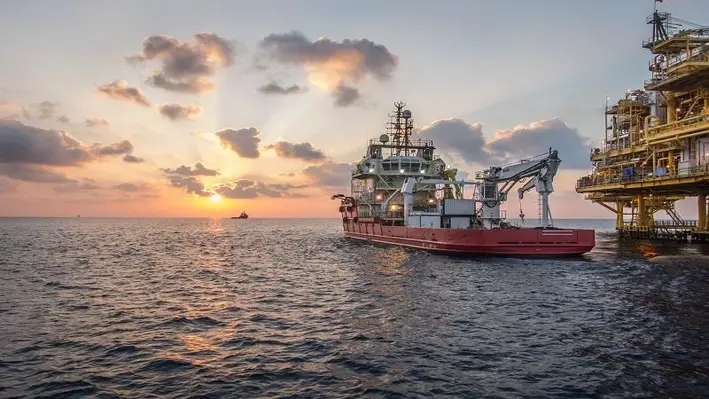

Archer Limited has signed an offer letter with Moreld laying out principle terms to purchase 100% of the shares in DeepWell AS (DeepWell).
DeepWell is a leading Norwegian well intervention company established in 2004 that is focused on mechanical wireline and cased hole logging services. Headquartered in Avaldsnes, Norway, DeepWell had approximately 200 employees and a revenue of NOK355mn in 2020.
Starting from 1 May 2021, Archer will also take over the Equinor wireline services scope from DeepWell, which was awarded in 2018. The light well intervention services for Equinor were to be completed by the AKOFS Seafarer together with Welltec, and included the provision of all wireline and basic logging services, together with operational support and crews.
Archer's CEO, Dag Skindlo, commented, “An acquisition of DeepWell would secure Archer’s access to a modern fleet of electric wireline units, as well as enable participation in the vessel-based light well intervention market. Strengthening our equipment fleet, broadening our low carbon/low emission solutions and continuing our track record for service quality are all key aspects of our strategy on the NCS. We are impressed by DeepWell’s team and look forward to continuing this process with them.”
The contemplated transaction is subject to due diligence, negotiation of the transaction documentation, closing conditions and regulatory approvals.
Archer’s North Sea expansion
The addition of DeepWell is further evidence of Archer’s formidable performance in the North Sea as it continues to expand operations and offerings in the region. The company continues to pursue new technology and digital solutions for well simulations and remote support in order to enhance efficiency and target reducing their carbon footprint.
Additionally, in April 2021, the company secured a long-term frame agreement with ConocoPhillips for the provision of wireline services on the Norwegian Continental Shelf. According to their release, this makes Archer the largest mechanical intervention company on the Shelf, with an estimated total contract back-log of NOK3.5bn.
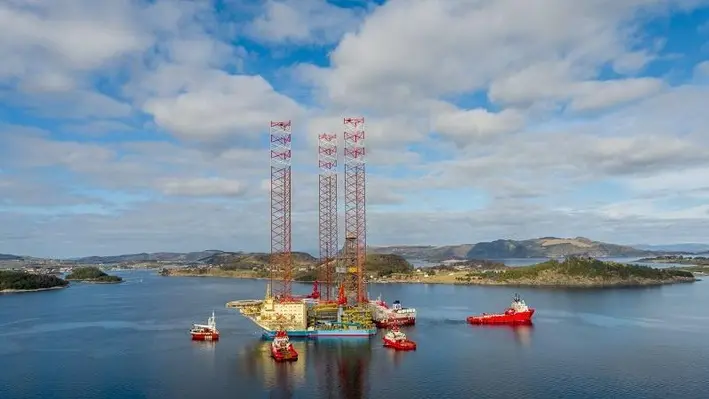
 Aker BP has completed the plugging of wells at the Valhall oilfield centre six years earlier than originally planned, saving more than NOK5bn.
Aker BP has completed the plugging of wells at the Valhall oilfield centre six years earlier than originally planned, saving more than NOK5bn.
Aker BP is the operator alongside partner Pandion of the Valhall oilfield which first saw oil flow in 1982. Since then, more than one bnboe have been produced from the area, which is three times more than originally expected.
In 2014, as a result of the decision to pursue a policy of modernisation rather than abandonment, Aker BP began a plugging campaign in order to revamp the field and keep it producing for the foreseeable future. Since that time, a total of 30 oil wells from the original drilling platform have been plugged in order to pursue the ambition of bringing up a further one bnboe from the field over the next forty years.
The first plugging campaign spanned 2014-2016 and was conducted by the Maersk Reacher rig. The next two campaigns, between 2017-2018 and 2020-2021, were carried out by the Maersk Invincible drilling rig, the departure of which last week marks the end of plugging operations for the field.
These campaigns were a roaring success as Aker BP have reported that no serious incidents were incurred during the work and that they were carried out in a total of four years, at a cost of NOK10.1bn, as opposed to original estimations of 10 years and NOK15.5bn.
Tommy Sigmundstad, SVP Drilling and Wells in Aker BP, commented, “The work to plug the wells has been a success through three major campaigns. The plugging has been carried out safely and efficiently. We have an unrelenting focus on improvement, and that has paid off in shorter operation times and reduced costs. Our alliance partner Maersk Drilling has been a key factor in all the campaigns. I am incredibly proud of the work delivered by teams across all companies both offshore and onshore.”
Alongside the plugging operations there has been a number of decommissioning activities carried out and planned. The QP accommodation platform was removed in the summer of 2019 by the catamaran crane vessel, Pioneering Spirit, and over the course of the next few years the original drilling platform and process platform will be removed along with the replacement of the original Hod wellhead platform (south of the Valhall field).
Utilising the latest technology
Wherever possible, Aker BP made use of the latest technology in order to optimise their operations.
Martin Straume, Chief Engineer for Well Plugging and Abandonment at Aker Bp, said, “Section milling of cemented casing has been carried out inside larger casing. We have done this to verify that well barriers are in place on the outside of the conductor. This means that we have avoided having to mill or pull entire sections of casing from the surface and down to the relevant depth. This represents up to several weeks of time saved per well, and is an enormous improvement in the plugging work.”
For the first time ever worldwide, Aker BP along with Halliburton and Maersk Drilling, conducted fully automated cementing operations from land, taking place from Aker BP’s offices in Stavanger. The technology increases efficiency, reduces costs and lowers HSE risk.
In addition, the top section of the old Valhall wells have been plugged using bismuth technology, an innovation conceived by BiSN to solve the challenge of potential methane leaks from old wells, and results in lower CO2 emissions compared with cement.
For the future
At the end of 2019, the first oil flowed from Valhall Flank West. As of March 2021, a new Hod platform is nearing completion at Aker Solutions’ yard in Verdal. The concept, implementation model and organisation for the Hod project were copied from Valhall Flank West. The planned production start for Hod is in Q1 2022, and recoverable reserves are estimated at around 40mnboe. Aker BP has also now embarked upon studies for a new central platform on Valhall, which will ensure production capacity for future volumes in the area.
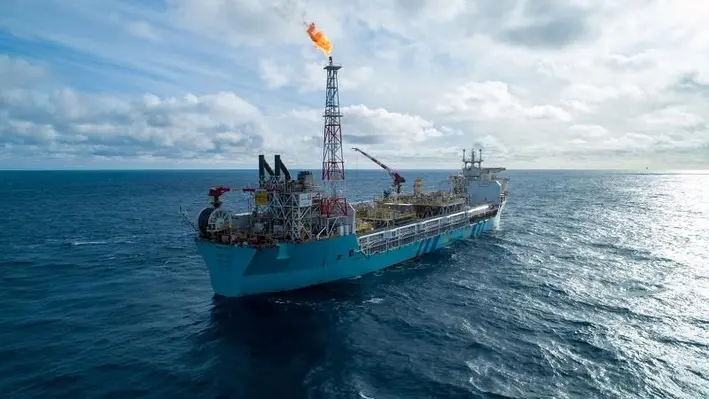

In an operational and financial update, Hurricane Energy plc, a UK-based oil and gas company, has provided an update on production from its Lancaster field and Early Production System (EPS) and net free cash balances.
The Lancaster (EPS) consists of two wells tied back to the Aoka Mizu floating production storage and offloading (FPSO) vessel, a relatively new system with first oil achieved in June 2019. Hurricane Energy has now reported that between Q4 2020 and Q1 2021, oil production shrank from 1.17mnbbl to 1.01mnbbl, with an average oil rate of decline of 12,700bpd to 11,200bpd.
The company has identified the decline in oil production in 2021 is a result of:
•The decision to reduce production from the 205/21a-6 well (the ‘P6 well’) in November 2020 for reservoir management purposes, which resulted in a reduced rate of increase in water cut
•Natural decline in the period
•A temporary reduction in the production rate in early March 2021, which required an unscheduled well intervention
Hurricane Energy continued by stating that production efficiency during the first quarter of 2021 was 95%, exceeding its planning assumption of 90%. The first quarter outturn compared to a production efficiency of 99% in the fourth quarter of 2020, with the sequential decrease explained by the unplanned well intervention.
As part of the Hurricane Energy’s periodic well testing programme for reservoir management purposes, the Lancaster field is currently producing from both the P6 and 205/21a-7z wells. Immediately prior to the testing programme, the field was producing from the P6 well alone at a rate of c.11,600 bopd on artificial lift via electric submersible pump, with an associated water cut of 28%.
Despite the unscheduled operations, the 21st cargo of Lancaster oil was still lifted on 17 March 2021 with the 22nd cargo already sold and due for lifting between end April and early May 2021. Additionally, despite the drop in production and the impact of Covid-19, Hurricane Energy reported that as of 31 March 2021, it had a net free cash of US$127mn, compared to US$106mn at 31 December 2020.
Page 30 of 35
Copyright © 2025 Offshore Network